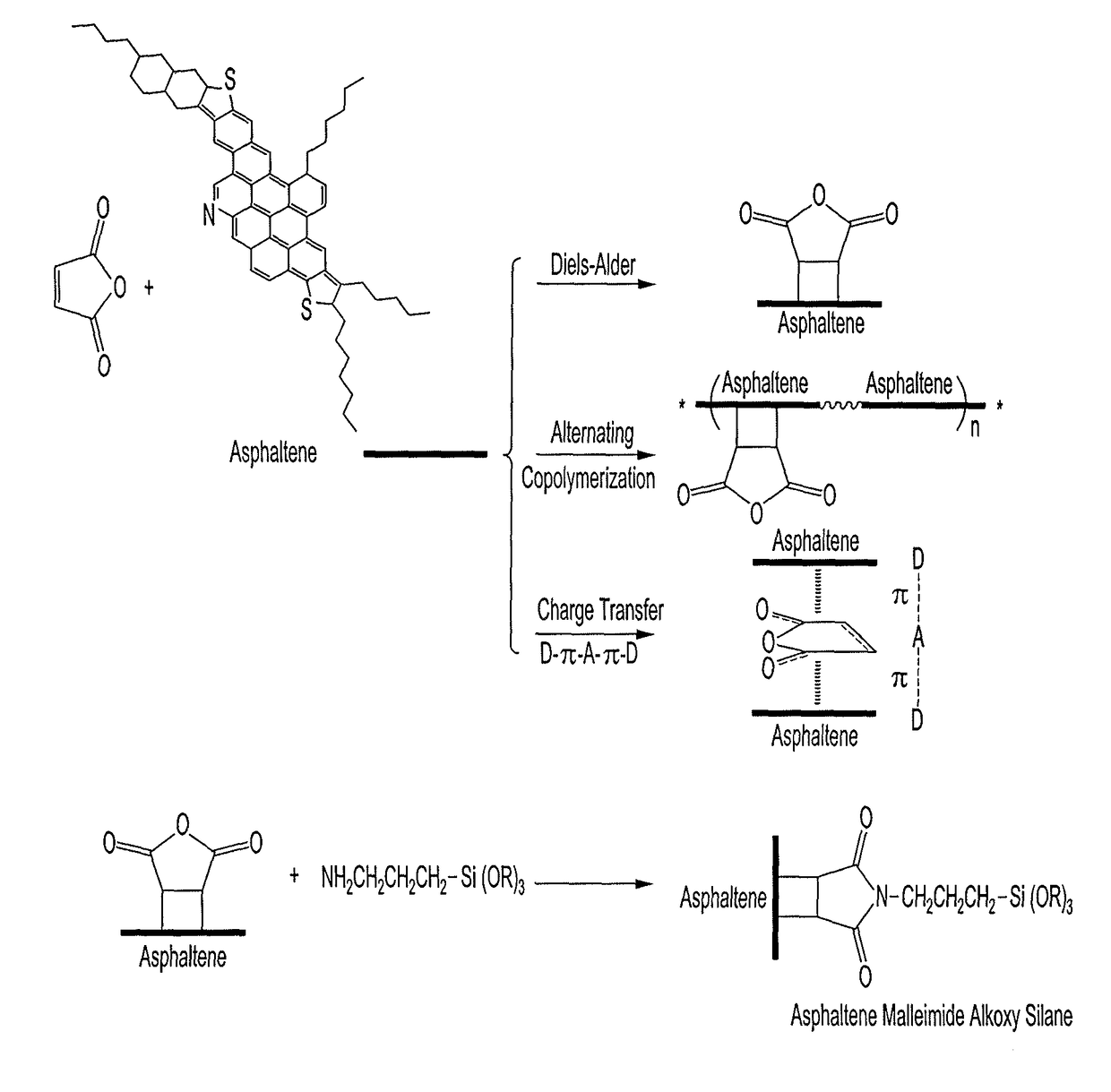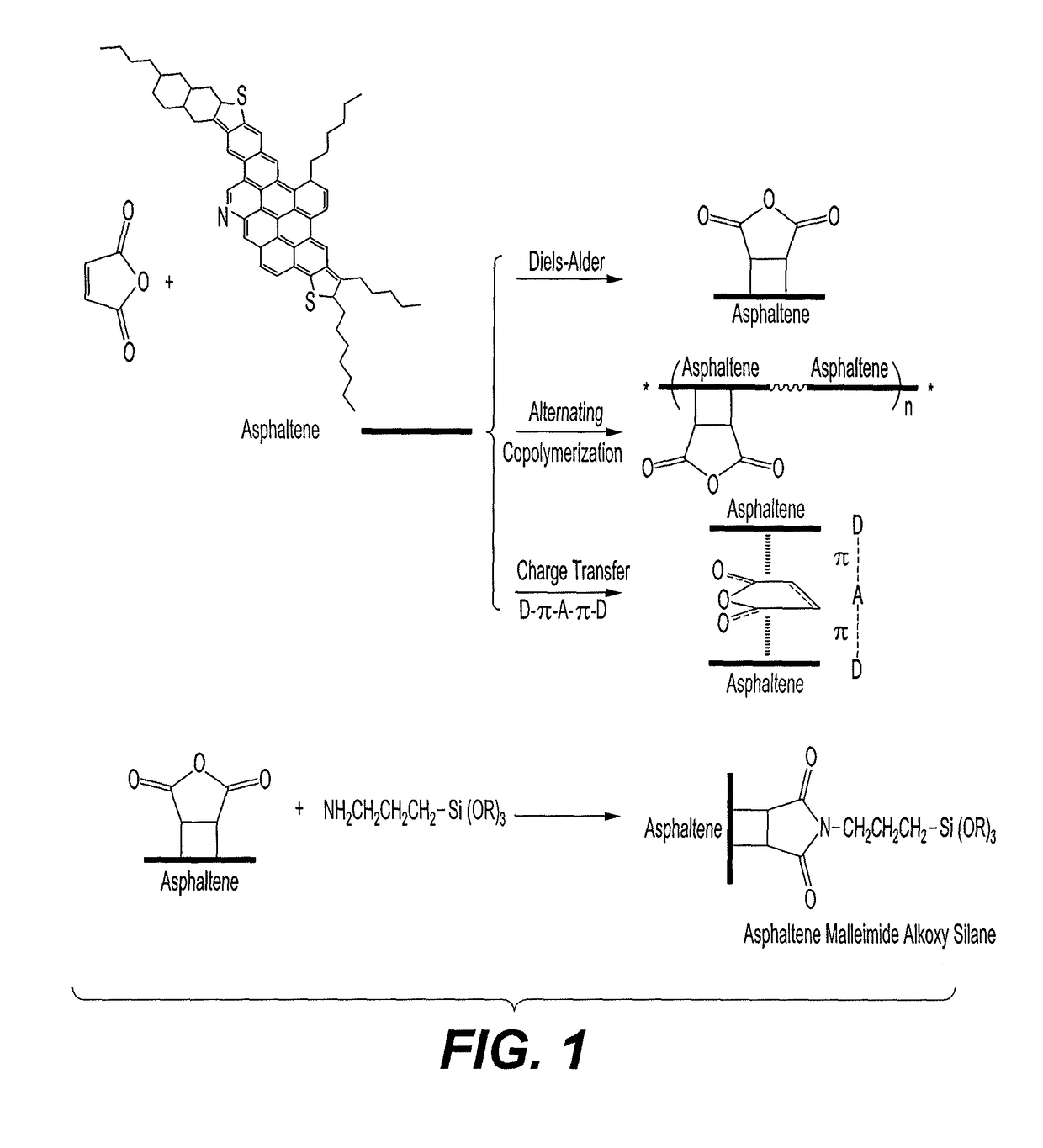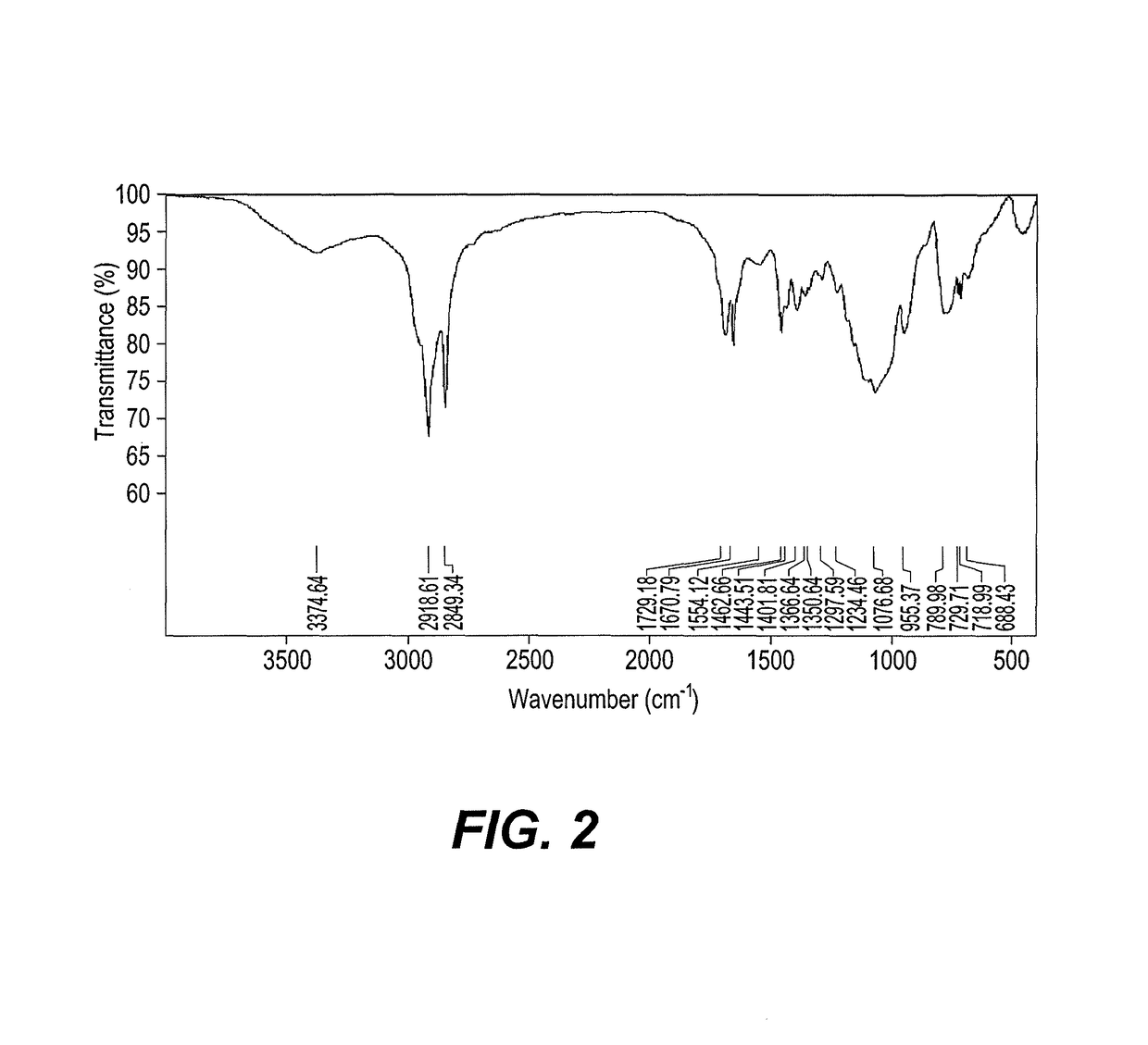Hydrophobic nanoparticle compositions for crude oil collection
a technology of nanoparticles and crude oil, which is applied in the direction of water treatment compounds, building components, water/sludge/sewage treatment, etc., can solve the problems of high cost of techniques, insufficient resource efficiency, and large risk of crude oil spills produced during off-shore well production or crude oil transportation, and achieves good mechanical strength, low cost, and superior recyclability.
- Summary
- Abstract
- Description
- Claims
- Application Information
AI Technical Summary
Benefits of technology
Problems solved by technology
Method used
Image
Examples
example 1
Materials for Exemplary Experimental Methods
[0021]All materials used in the following examples demonstrating non-limiting embodiments of the present subject matter were analytical grade and purchased from Sigma-Aldrich Chemicals Co. Silicone precursors based on vinyl trimethoxy silane (VTS), tetraethoxysilane (TEOS), and γ-aminopropyltriethoxysilane (APS) were used. Unsaturated fatty acids and amines such as oleic, linoleic and linolenic acids and amines were also used to prepare hydrophobic silicone precursors. Toluene:n-heptane solvent (1:40 vol. %) was used to isolate the asphaltene fractions from crude oil. The specific silicone precursors, unsaturated fatty acids and solvents should be understood to be non-limiting examples of chemically appropriate materials for the relevant embodiments. Arabic heavy crude oil (19.2° API gravity) and medium crude oil (30.8° API gravity) were produced from Ras Gara wells by Aramco, Saudi Arabia. Sea water was collected from the Arabian Gulf
[002...
example 2
Preparation of Asphaltene Succinimide of γ-aminopropyltriethoxysilane (ASAS)
[0026]Asphaltene (2 g) and maleic anhydride (1.5 g) were dissolved in 50 ml of toluene in a three necked bottom flask. The mixture was refluxed for 8 h under nitrogen atmosphere, followed by removal of solvent under reduced pressure. The product of this reaction was mixed with an equimolar solution of APS and 5 ml toluene and refluxed at 165° C. for 2.5 hours. The reaction temperature was then raised to 180° C. and maintained for an additional 4 hours. Finally, the mixture was cooled to room temperature and then washed with acetone followed by water.
example 3
Preparation of Fatty Amines of Vinyltrimethoxysilane (SFA)
[0027]Fatty amine, such as oleyl amine (0.01 mol), was added to vinyltrimethoxysilane (0.05 mol) in 80 ml tetrahydrofuran (THF) and the resulting solution was stirred at 65° C. for 4 h. The THF was removed with a rotary evaporator under pressure to obtain a fatty amine of vinyltrimethoxysilane (SFA).
PUM
| Property | Measurement | Unit |
|---|---|---|
| Length | aaaaa | aaaaa |
| Particle size | aaaaa | aaaaa |
| Particle size | aaaaa | aaaaa |
Abstract
Description
Claims
Application Information
 Login to View More
Login to View More - R&D
- Intellectual Property
- Life Sciences
- Materials
- Tech Scout
- Unparalleled Data Quality
- Higher Quality Content
- 60% Fewer Hallucinations
Browse by: Latest US Patents, China's latest patents, Technical Efficacy Thesaurus, Application Domain, Technology Topic, Popular Technical Reports.
© 2025 PatSnap. All rights reserved.Legal|Privacy policy|Modern Slavery Act Transparency Statement|Sitemap|About US| Contact US: help@patsnap.com



